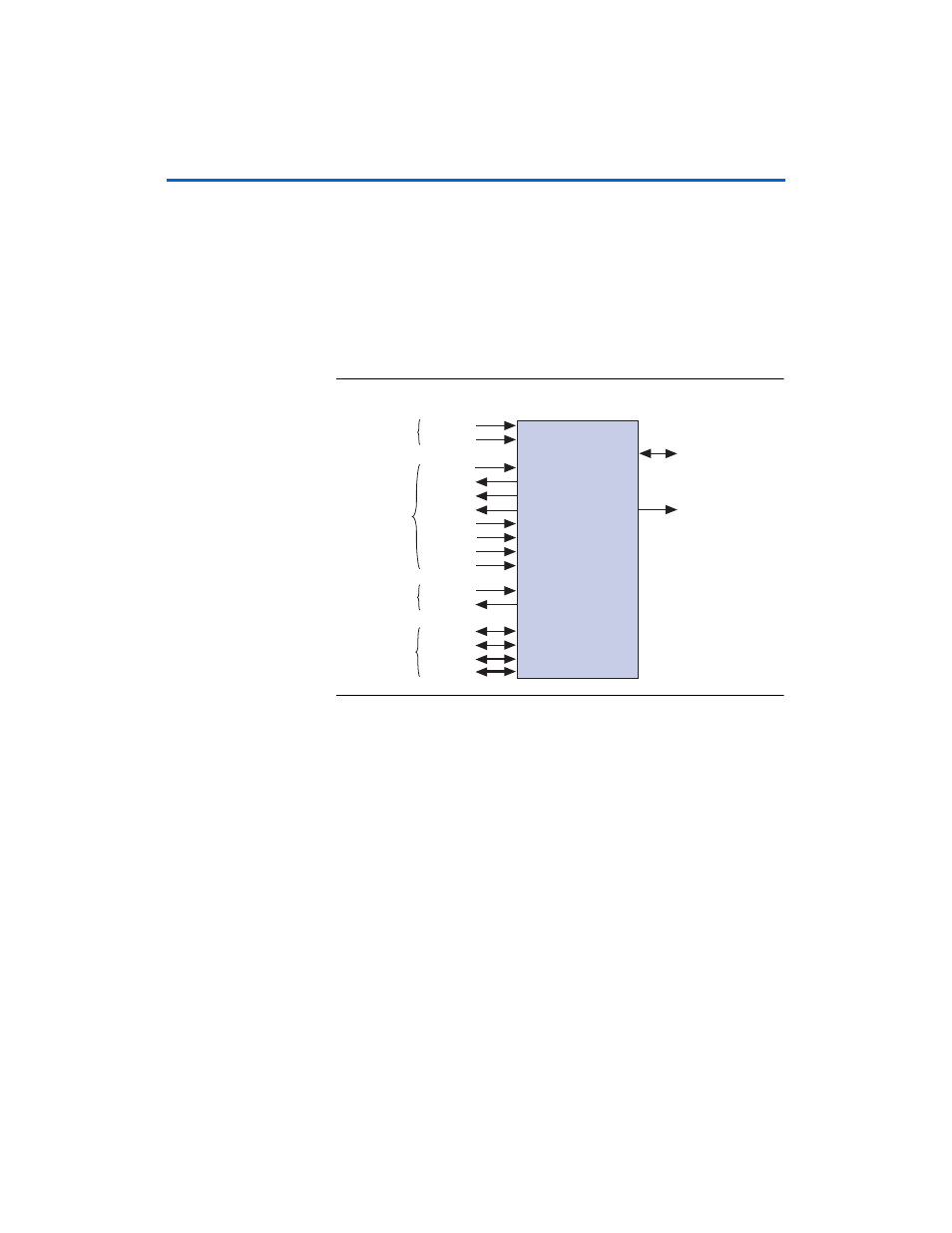Master device signals & signal assertion – Altera PCI Compiler User Manual
Page 83

Altera Corporation
User Guide Version 11.1
3–9
October 2011
Functional Description
Master Device Signals & Signal Assertion
illustrates the PCI-compliant master device signals that
connect to the PCI bus. The signals are grouped by functionality, and
signal directions are illustrated from the perspective of a PCI MegaCore
function operating as a master on the PCI bus.
shows all
master signals. The 64-bit extension signals, including req64n, ack64n,
par64
, ad[63..32], and cben[7..4], are not implemented in the
pci_mt32
function.
Figure 3–6. Master Device Signals
A 32-bit master sequence begins when the local side asserts lm_reqn32n
to request mastership of the PCI bus. The PCI MegaCore function then
asserts reqn to request ownership of the PCI bus. After receiving gntn
from the PCI bus arbiter and after the bus idle state is detected, the
function initiates the address phase by asserting framen, driving the PCI
address on ad[31..0], and driving the bus command on cben[3..0]
for one clock cycle.
1
For 64-bit addressing, the master generates a dual-address cycle
(DAC). On the first address phase, the pci_mt64 function
drives the lower 32-bit PCI address on ad[31..0], the upper
32-bit PCI address on ad[63..32], the DAC command on
cben[3..0]
, and the transaction command on cben[7..4].
On the second address phase, the pci_mt64 function drives the
upper 32-bit PCI address on ad[31..0] and the transaction
command on cben[3..0].
Master Device
clk
rstn
idsel
req64n
framen
irdyn
trdyn
stopn
devseln
ack64n
par64
par
ad[63..0]
cben[7..0]
perrn
intan
System
Signals
Interface
Control
Signals
Address,
Data &
Command
Signals
Interrupt
Request
Signal
gntn
reqn
Arbitration
Signals
Error
Reporting
Signal
